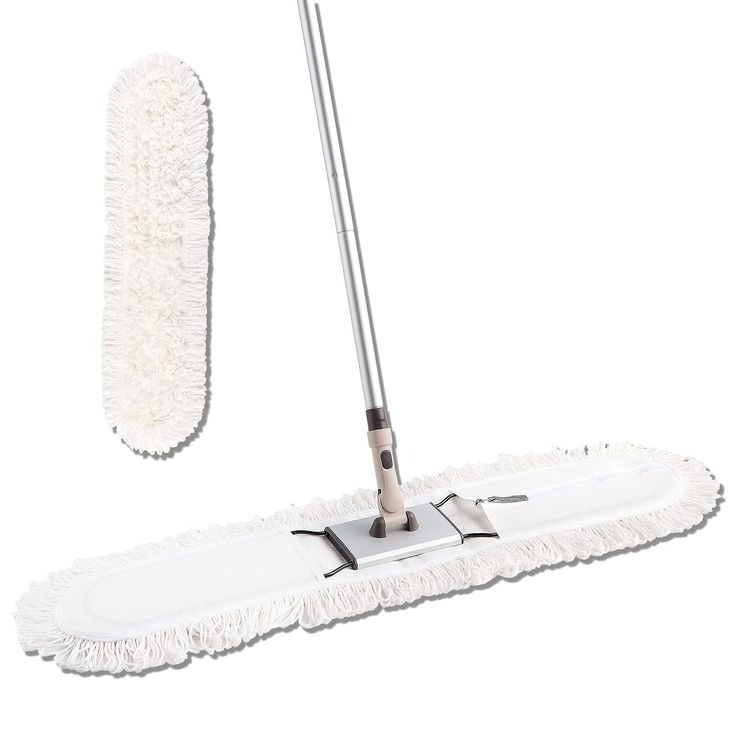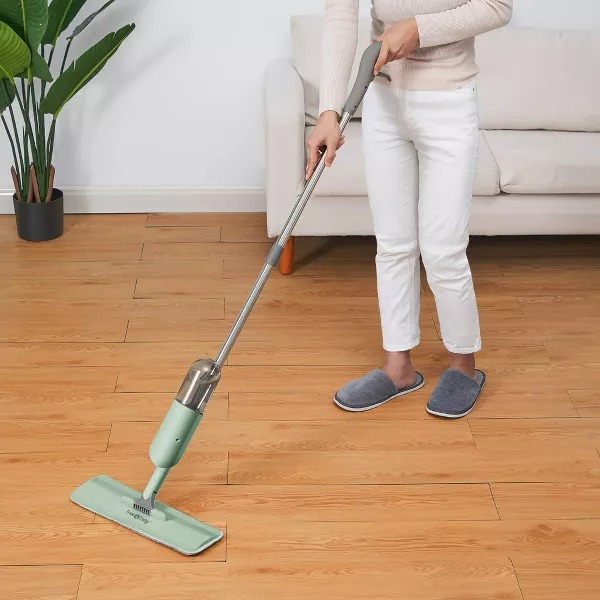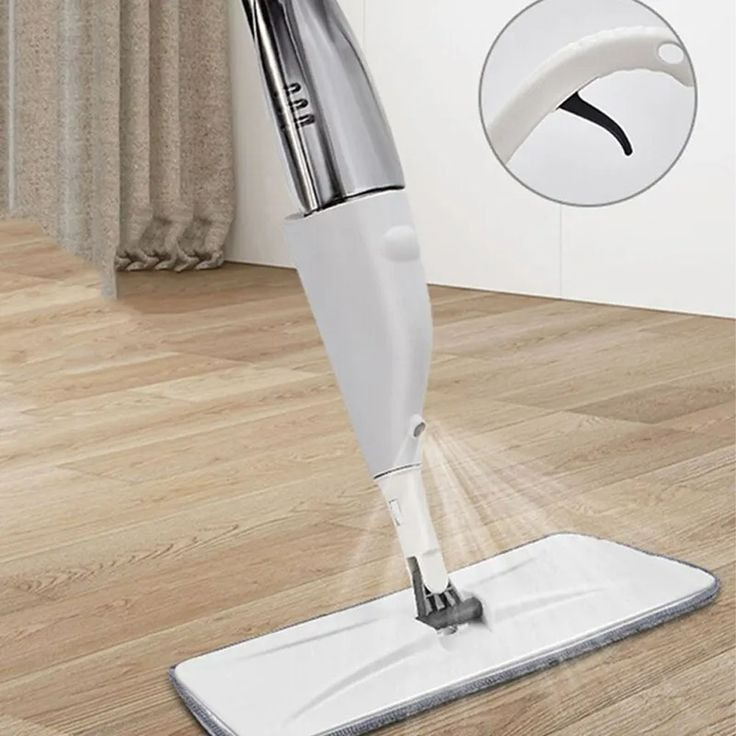Introduction to Manual and Steam Mops
In the quest for cleanly floors, manual and steam mops stand as pivotal tools. Historically, manual mops have been trusty companions in domestic cleaning, praised for their simplicity and cost-effectiveness. Essentially, these mops require physical effort as you scrub and slide them across the floor, often necessitating a bucket of water for rinsing and wringing out dirtied mop heads.
Steam mops, on the other hand, introduce a modern twist to floor cleaning with their innovative utilisation of steam power. By heating water to create steam, these mops dispense with the need for harsh chemicals, targeting dirt and grime with heat and moisture. They are particularly favored for their germ-killing ability and the quick drying time of floors post-mopping.
Categorically, both mop types offer unique advantages. Manual mops shine in their versatility, affordable price point and straightforward usage. Meanwhile, steam mops appeal through their sanitizing prowess and the ease of pushing a light mop head across surfaces, sans the water bucket.
Opting for the right mop entails evaluating personal cleaning preferences, floor types, and the level of convenience desired. While some might lean towards the traditional manual method, others may prefer the efficiency of a steam mop. Ultimately, the best mop will align with your cleaning habits, budget, and the desire for either a rigorous workout or a more effortless experience.

Assessing Various Mop Types
Choosing the best mop for your cleaning needs involves understanding the different types available.
Cotton Mops Overview
Cotton mops, known for their simplicity, use absorbent cotton strings to clean floors. They require manual wringing and perform well on various surfaces.
Squeeze Mops: Functionality and Design
Squeeze mops feature a sponge and a handle mechanism to wring out water easily. They’re ideal for quick clean-ups and avoiding hand contact with dirty water.
Flat Mops Versatility
Flat mops offer interchangeable pads and a slender design for reaching tight spaces. They’re effective for both wet and dry cleaning on diverse floor types.
Spin Mops Features
Spin mops use a bucket with a spinning mechanism to wring out the mop head without manual effort. They’re convenient for cleaning larger areas without dirtying your hands.
Microfibre Strip Mops
Microfibre strip mops use synthetic fibers that are soft and highly absorbent, making them suitable for delicate surfaces while providing a thorough clean.
Spray Mops Convenience
Spray mops come with a built-in tank and spray mechanism, eliminating the bucket. They’re quick and easy to use for small spills and light cleaning tasks.

Squeeze Mops: A Detailed Look
Squeeze mops stand out with their unique wringing method and ease of use. These mops consist of a sponge head that absorbs water and cleans spills efficiently. The handle usually features a lever that when pulled, folds the sponge, squeezing out excess water directly over a sink or bucket. This mechanism keeps your hands dry and clean, making it a preferred choice for quick clean-ups. They come in various designs and sizes to suit different cleaning needs and spaces.
Traditional Squeeze Mops
Conventional squeeze mops have a sponge head attached to a straight handle. The sponge soaks up liquids and can be easily wrung out by a manual lever or squeezing mechanism. They’re generally lightweight and straightforward in design, making them a common sight in households around the world. Simple, cost-effective, and reliable, these mops serve well for day-to-day spill management and floor cleaning tasks.
Alternative Squeeze Mops
Modern alternatives to the traditional squeeze mop feature advanced materials such as microfiber and improved ergonomic designs. They aim to enhance the cleaning experience by offering better absorption, effective dirt removal, and more comfortable handles. Some models include integrated scrubbers for tackling tough stains, and others have self-contained squeezing mechanisms that don’t require a separate wringer bucket.
Pros and Cons of Squeeze Mops
Pros:
- Hand-free wringing keeps hands clean.
- Lightweight and easy to maneuver.
- Ideal for quick clean-ups and smaller areas.
- Sponge heads often detachable for easy cleaning or replacement.
Cons:
- Not the best for large areas due to frequent wringing.
- Sponge heads may deteriorate faster than other types of mop heads.
- Manual effort required to squeeze water out.
- May leave streaks if not wrung out properly.
Squeeze mops cater well to those looking for an uncomplicated, efficient tool for regular cleaning. When considering one, balance the benefits of ease and the potential drawbacks of manual effort and durability.

Steam Mops: Efficient Cleaning Without Chemicals
Steam mops are a modern cleaning solution that offer efficient cleaning without chemicals. By turning water into steam, these mops effectively lift dirt and grime. They eliminate bacteria and dry floors quickly. Steam mops are versatile and can be used on a variety of floor types.
Working Principle of Steam Mops
Steam mops heat water to produce a hot mist. This steam loosens dirt and kills germs. A microfiber pad attached to the mop head then wipes the surface clean. The high temperature of the steam ensures that floors dry rapidly, preventing moisture buildup.
Benefits of Using Steam Mops
The advantages of steam mops are numerous. They sanitize floors without harsh chemicals, making them safe for families and pets. The hot steam cuts through grease and sticky messes with ease. Since they leave less residue, steam mops also reduce streaks and spots on flooring. Another benefit is that they’re more effective at removing allergens, improving indoor air quality.
Limitations of Steam Mops
However, steam mops do have some limitations. They typically cost more than manual mops. These mops also require electricity, limiting mobility to the length of their cord. While steam mops are safe on many surfaces, they may not be suitable for certain hardwoods or delicate tiles. It’s essential to use them as directed to avoid damaging sensitive flooring.
Mop Maintenance Tips and Best Practices
Proper maintenance is key in extending the life of your mop and ensuring effective cleaning. Here are some tips and best practices for taking care of different types of mops.
Care for Different Mop Types
Each mop requires unique care:
- Cotton Mops: After use, wash the mop head in a washing machine or by hand. Hang it to dry completely to prevent mildew.
- Squeeze Mops: Rinse the sponge thoroughly after use. Replace the sponge regularly to maintain its effectiveness.
- Flat Mops: Machine wash the microfiber pads. Avoid fabric softeners that can reduce absorbency.
- Spin Mops: Clean the microfiber head according to the manufacturer’s instructions. Often machine washable.
- Microfibre Strip Mops: Wash the strips in a laundry bag to keep them in good condition.
- Spray Mops: Empty and rinse the tank after use. Wash pads and let air dry.
Extending Your Mop’s Life
Here are some general tips for all mops:
- Always rinse your mop after use to remove dirt and debris.
- Avoid using bleach which can weaken fibers and shorten mop life.
- Store your mop upside down or hang it to keep the head shape intact.
- Replace mop heads when they start to look worn or fail to clean effectively.
- Follow the manufacturer’s care instructions for the best results.
Regular care not only prolongs the life of your mop but also ensures it cleans efficiently each time. Keep your mop in top condition for sparkling clean floors with every use.
Cost Analysis: Steam vs Manual Mops
When investing in a mop, consider both initial costs and potential long-term savings. Steam mops typically cost more upfront but may offer savings over time due to their durability and lack of need for expensive cleaning solutions. Manual mops are cheaper to purchase; however, they often require ongoing expenses such as replacement heads or cleaning agents.
Initial Investment and Long-term Savings
Steam mops require a higher initial investment. Their prices can range significantly, but quality models often come with a steep price tag. The upside is their lasting power, with durable designs that withstand years of use. You save on cleaning chemicals, as steam alone can effectively sanitize floors. Maintenance costs for steam mops are usually lower since they don’t need replacement heads or pads as frequently.
Manual mops, on the contrary, come with a lower upfront cost. They are affordable and widely available. The ongoing cost of supplies, like replacement mop heads and cleaning solutions, can add up, potentially negating the initial cost advantage. If you opt for higher-end manual mops with washable heads, you could save more in the long run.
Analysis of Cleaning Efficiencies
Evaluating the efficiency of steam vs manual mops involves more than just cost. Steam mops heat up quickly and clean faster without the need for a bucket, reducing overall cleaning time. They’re particularly effective against stubborn grime and can improve indoor air quality by reducing allergens.
Manual mops, while more time-consuming, offer control over the cleaning process. You can choose the water temperature and cleaning solution concentration, adapting to different types of dirt and stains. They require physical effort but can reach into nooks and crannies that steam mops sometimes miss. Depending on your floor type and cleaning habits, a manual mop may be the more practical choice.
Conclusion: Choosing the Right Mop for Your Floors
In concluding our exploration of mops, it’s clear that both manual and steam mops have their distinct benefits. Your choice ultimately comes down to your specific cleaning requirements, floor types, and personal preferences.
For those who seek a more traditional, hands-on approach and have smaller spaces to maintain, manual mops, especially the cotton and squeeze varieties, might be the best fit. Their affordability and ease of use make them a staple in many households.
Conversely, if you’re aiming for a high level of hygiene with minimal physical effort, a steam mop is the way to go. It’s a fitting choice for larger areas or homes with children and pets, where sanitization is a priority. Although more expensive initially, steam mops can lead to savings by cutting out the need for chemical cleaners.
In terms of maintenance, both mop types require care to ensure longevity. From washing and drying mop heads to replacing parts as needed, a little attention goes a long way in preserving your mop’s effectiveness.
Ultimately, the best mop is one that caters to your lifestyle and cleaning habits. Whether it’s a manual squeeze mop for quick touch-ups or a steam mop for a deep, chemical-free clean, your choice should make the task of floor cleaning efficient and effective. So, consider your needs, weigh your options, and choose the mop that will leave your floors shining with less hassle and more satisfaction.